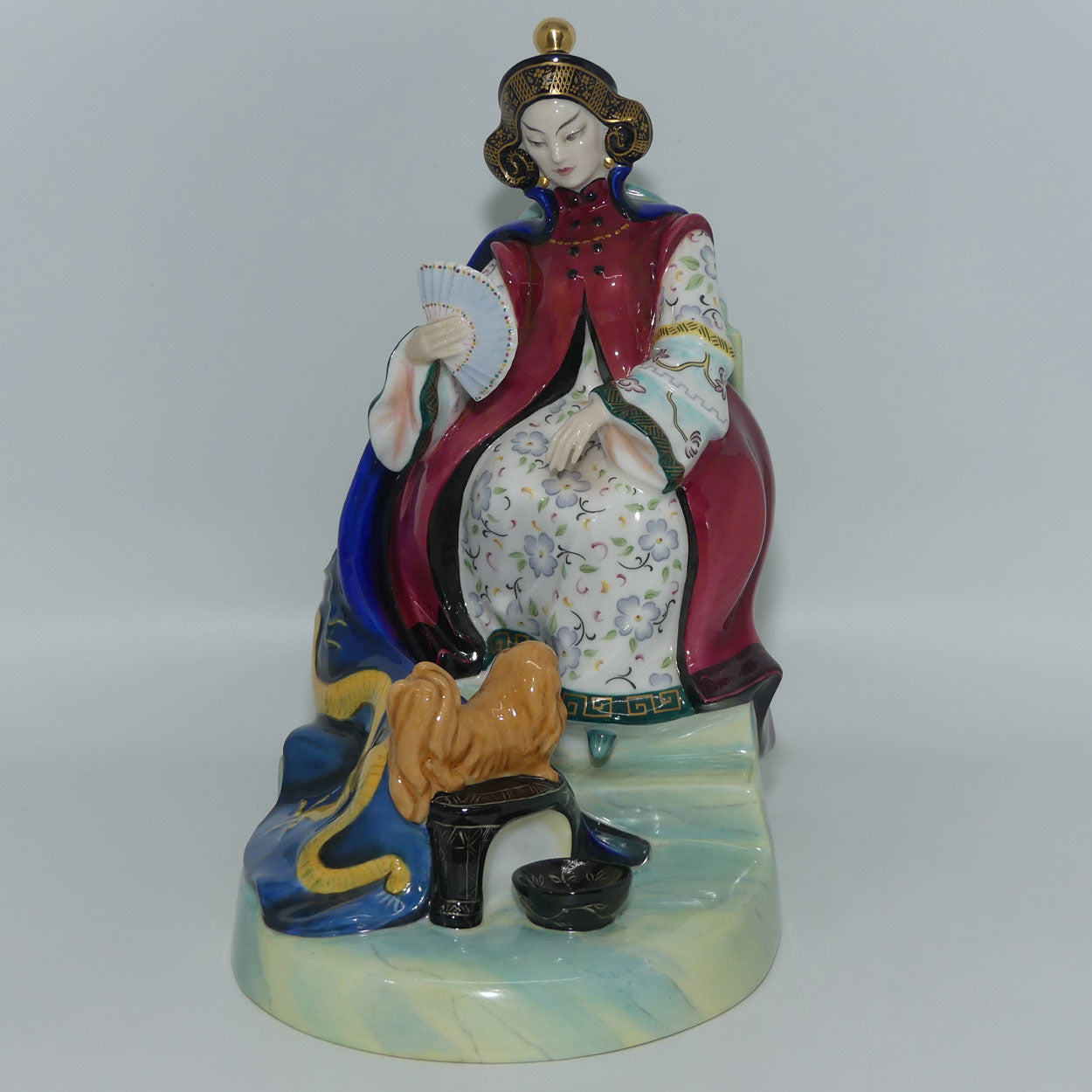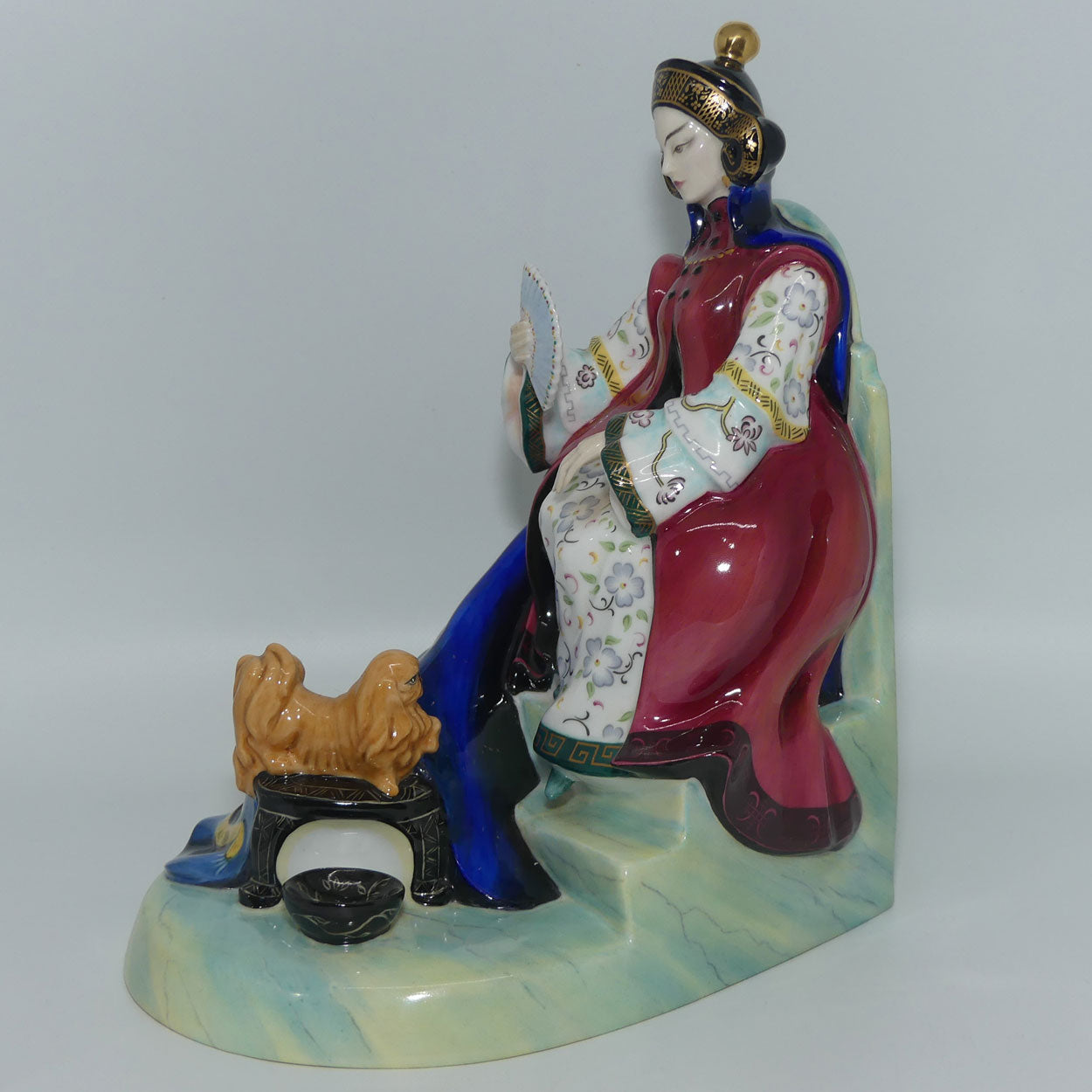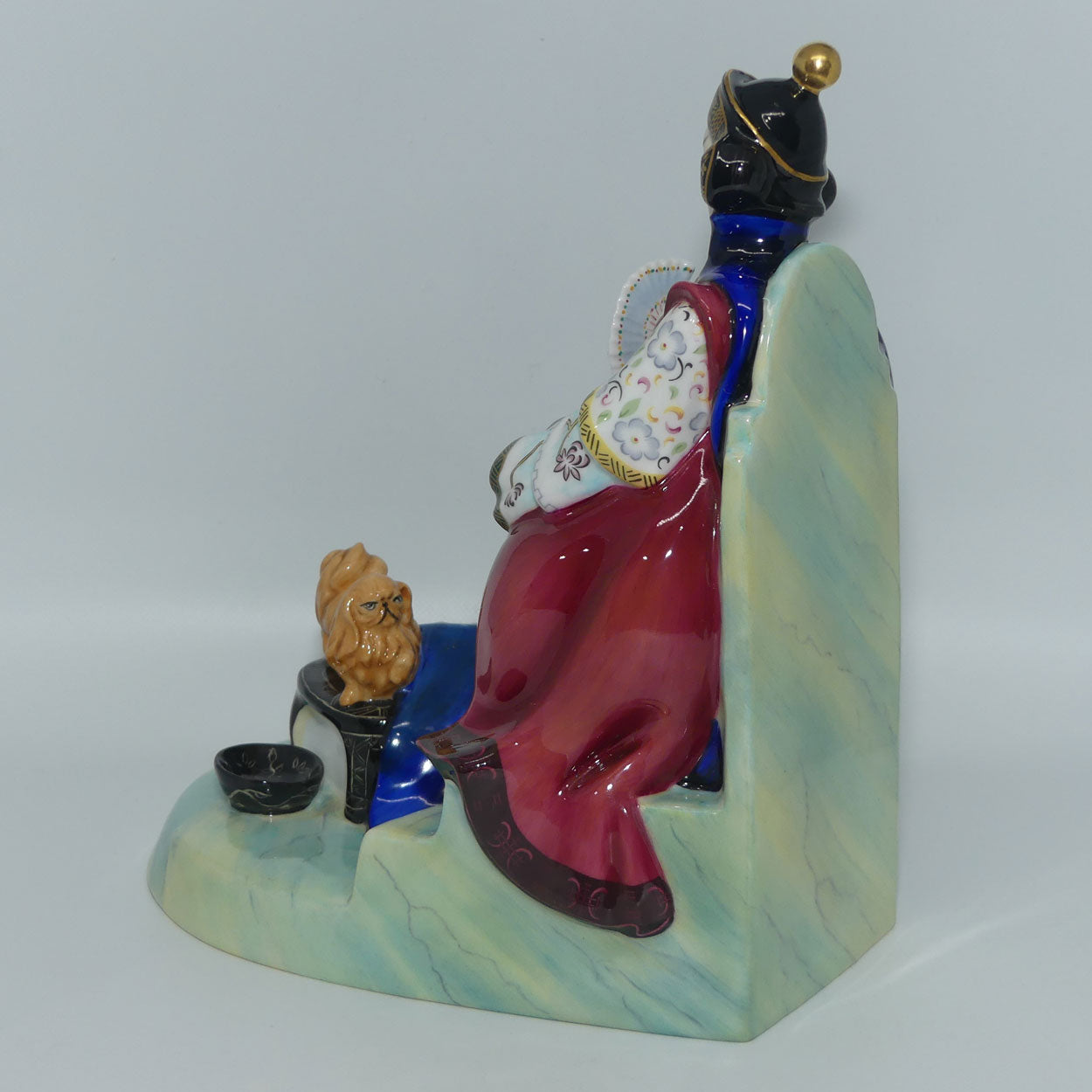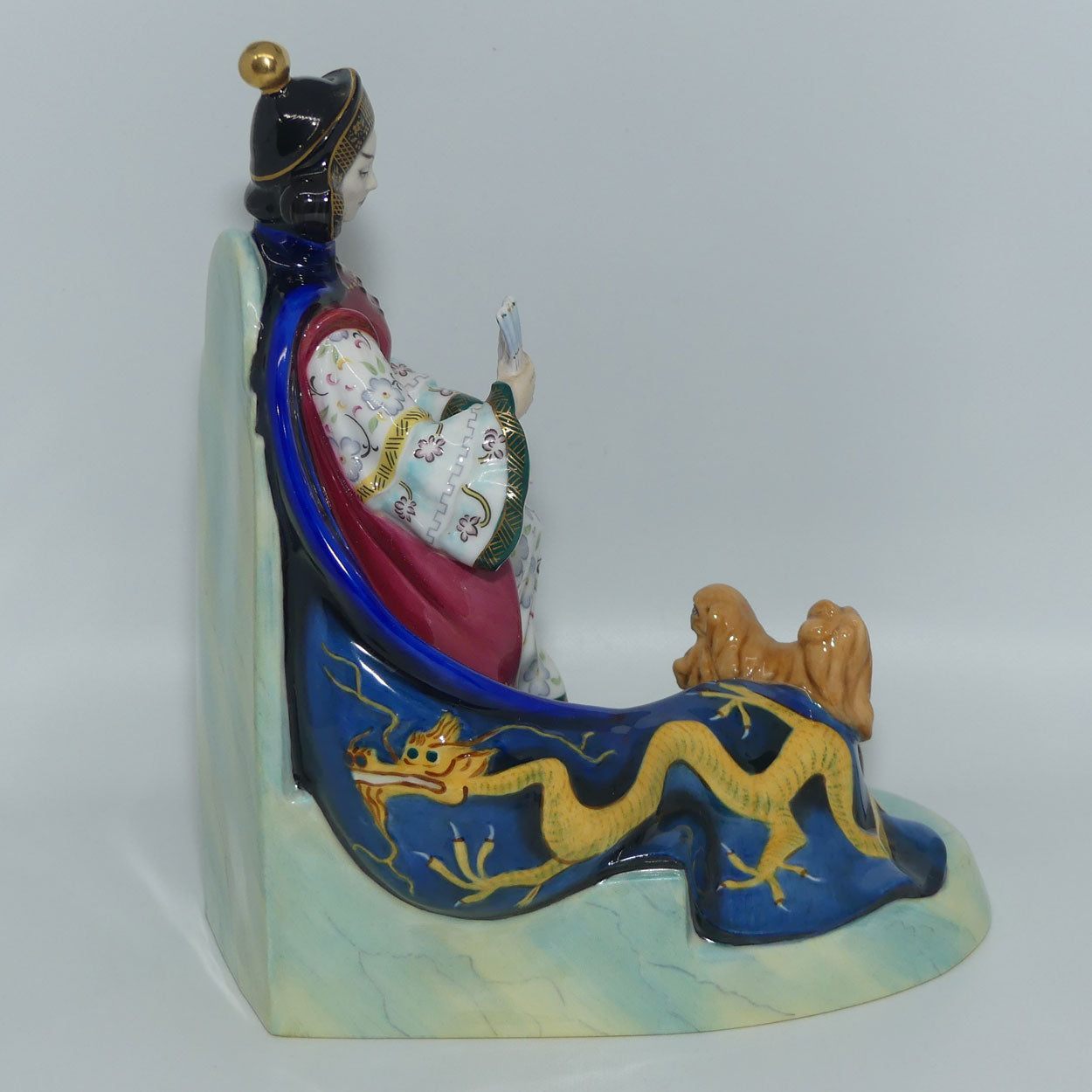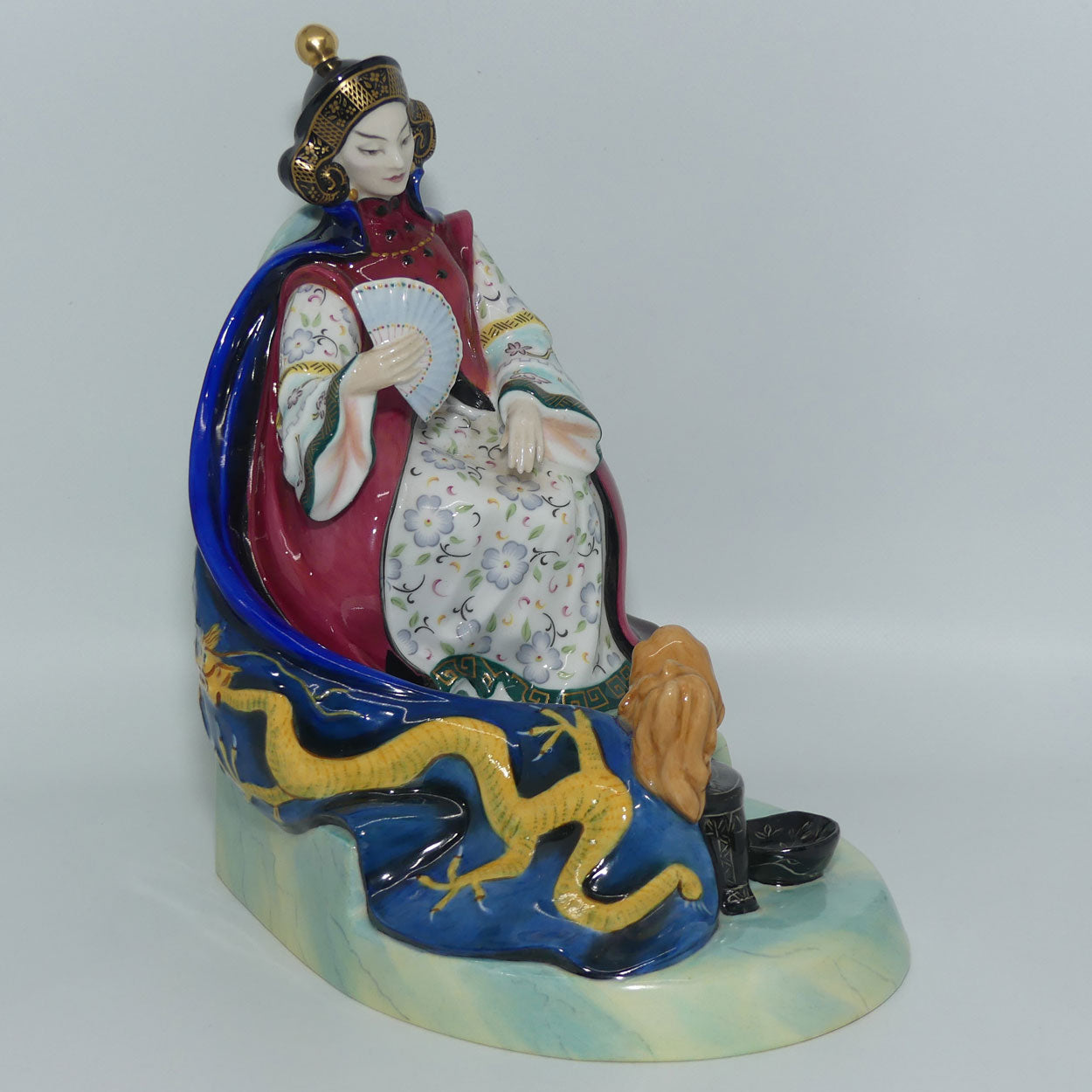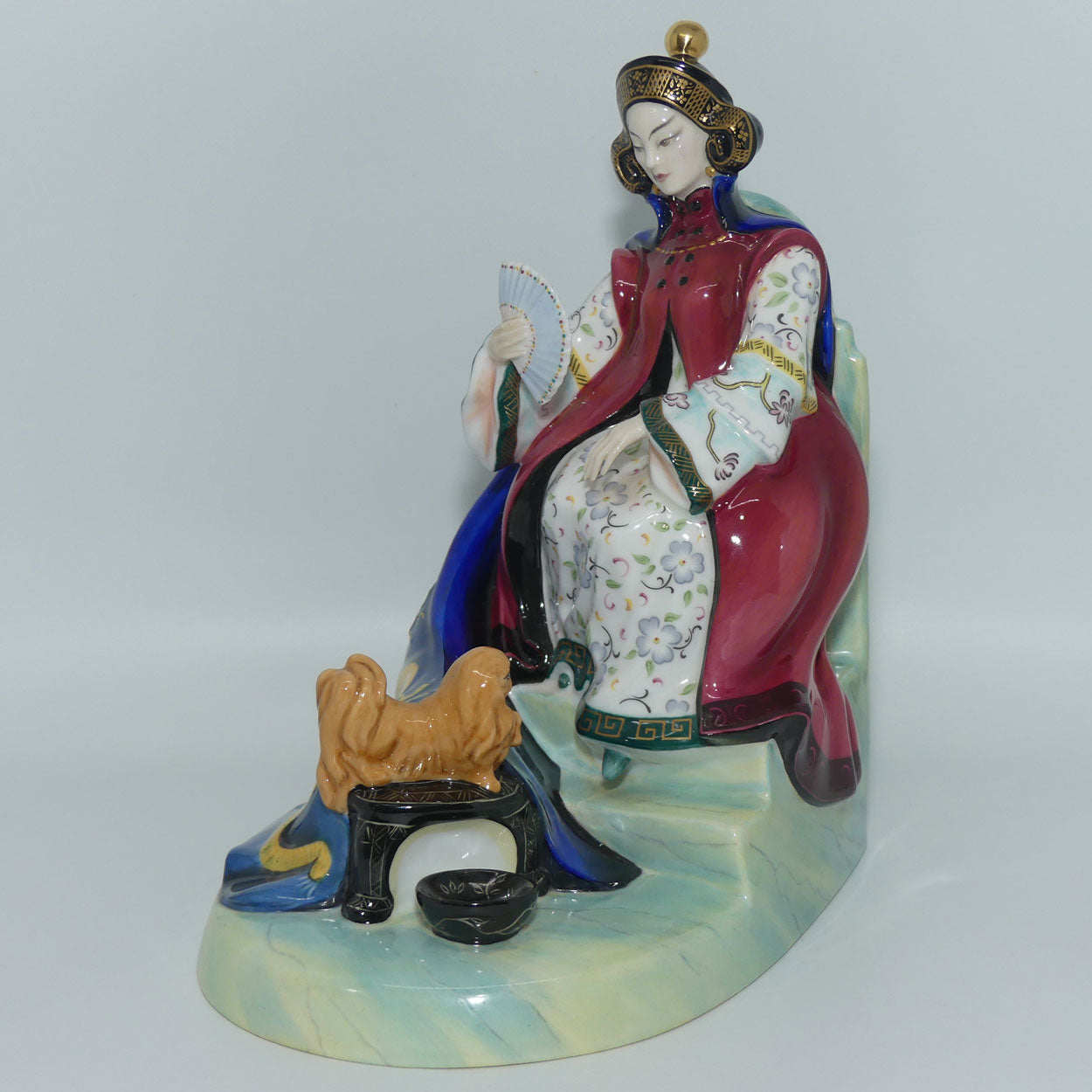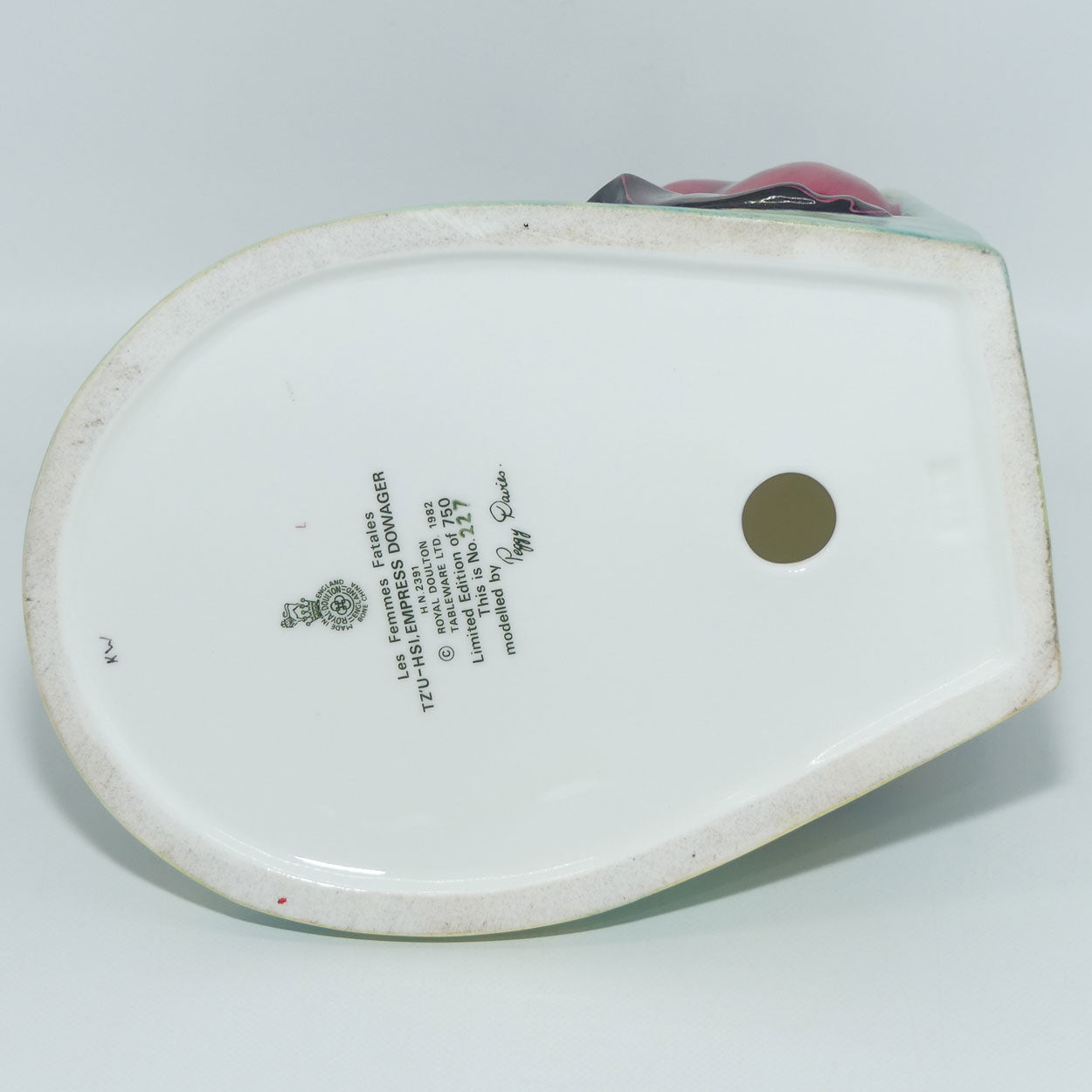Description
from the Les Femmes Fatales collection
Issued in a Limited Edition of 750 pieces in 1983
Designer: Peggy Davies
Approx 21.5cms (8 1/2") tall
In excellent condition
With Original Laminated Certificate
GUARANTEED free from damage and repair
About T'zu-hsi, Empress Dowager:
Empress Dowager Cixi (Chinese: 慈禧太后; pinyin: Cíxǐ Tàihòu, formerly romanised as Empress Dowager T'zu-hsi; 29 November 1835 – 15 November 1908), was a Chinese noblewoman, concubine and later regent who effectively controlled the Chinese government in the late Qing dynasty for 47 years, from 1861 until her death in 1908. Selected as a concubine of the Xianfeng Emperor in her adolescence, she gave birth to a son, Zaichun, in 1856. After the Xianfeng Emperor's death in 1861, the young boy became the Tongzhi Emperor, and she assumed the role of co-empress dowager, alongside the Emperor's widow, Empress Dowager Ci'an. Cixi ousted a group of regents appointed by the late emperor and assumed the regency along with Ci'an, who later died under mysterious circumstances. Cixi then consolidated control over the dynasty when she installed her nephew as the Guangxu Emperor at the death of her son, the Tongzhi Emperor, in 1875. This was contrary to the traditional rules of succession of the Qing dynasty that had ruled China since 1644.
Cixi supervised the Tongzhi Restoration, a series of moderate reforms that helped the regime survive until 1911. Although Cixi refused to adopt Western models of government, she supported technological and military reforms and the Self-Strengthening Movement. She supported the principles of the Hundred Days' Reforms of 1898, but feared that sudden implementation, without bureaucratic support, would be disruptive and that the Japanese and other foreign powers would take advantage of any weakness. She placed the Guangxu Emperor, who, she thought, had tried to assassinate her, under virtual house arrest for supporting radical reformers, publicly executing the main reformers. After the Boxer Rebellion led to invasion by Allied armies, Cixi initially backed the Boxer groups and declared war on the invaders. The ensuing defeat was a stunning humiliation. When Cixi returned to Beijing from Xi'an, where she had taken the emperor, she became friendly to foreigners in the capital and began to implement fiscal and institutional reforms aimed to turn China into a constitutional monarchy. The deaths of both Cixi and the Guangxu Emperor in November 1908 left the court in hands of Manchu conservatives, a child, Puyi, on the throne, and a restless, deeply divided society.
Region:
Condition:
Condition Descriptions
In the main we sell delicate, individually made antique and collectible items that have had a prior ownership history and prior use. We believe that we are extraordinarily exacting in our condition reports of our items – and we describe our items with knowledge and a critical eye developed over decades of experience handling an enormous quantity of similar items. We make every human effort possible to detect or disclose significant age related soiling, damage through use or misuse, or restoration to damage to items on this website. Given the age of the items we sell – minor and insignificant wear, blemishes consistent with the manufacture techniques used in the production of an item or simply evidence of age of a previously owned item (for example fine, clean crazing) is not damage - nor significantly detracting.
For further details refer Clause 2 in our Terms of Service, which you can find here.
Shipping Times
We do not guarantee shipping times - while all best efforts are made to dispatch in a timely manner, we do not guarantee shipping times. If receipt of your order is time sensitive - please contact us to discuss requirements before placing an order, not after placing an order. We cannot guarantee carriers delivery times - they are beyond our control.
Returns and Refunds
Items can be returned if not as described for a refund of the purchase price and shipping – provided that you notify us within 7 days of receipt of the item of your intention to do so. You can do this by emailing or phoning us.
We consider significantly not as described as a failure on our part to detect or disclose significant soiling, damage or restoration. Given the age of the items we sell – minor and insignificant wear, blemishes consistent with the manufacture techniques used in the production of an item or simply evidence of age like fine, clean crazing is not reason to return an item.
Order Cancellations
1.1 If for some reason we cannot supply an item you have ordered (due to our error or an item being lost), we will refund you in full. This may take a few working days for the credit to appear in your account due to banking vagaries. Please note sometimes refunds can differ in quantum due to currency conversions and exchange rate differences.
1.2 If you cancel an order (before we dispatch to you) due to change of mind or concerns about shipping times - we will refund you for the purchase price of the item LESS $25 in administration fees AND a 2.5% restocking surcharge (which is essentially what our bank charges us to receive your payments via credit cards or online payment methods, together with currency conversion fees and other ). Your change of mind incurs expenses for us - these are charges we incur and you pay - we should not lose because of your decision.
1.3 Once an order is dispatched to you, orders cannot be cancelled under any circumstances.
Buyers Remorse
Given the delicate nature of the items we sell and the practicalities of logistics of same, we do not refund for change of mind or buyers remorse. If you purchase an item and when you receive it you find that you already have it in your collection – we will exchange your purchase for other items that we have or failing that, extend a store credit, but the shipping in both directions is your cost. For exchanges and returning for store credit please notify us within 7 days of receipt of the item of your intention to do so. You can do this by emailing or phoning us.
Returning your Item to Us
On returns, the items must be well packed and returned to us in the same high quality manner in which they were sent to you.
Duties and Taxes on Export Sales
We sell our items on a delivered taxes unpaid. Taxes and duties on items ordered overseas (from us located in Australia) are your responsibility. If you fail to pay the duties and taxes on your item and it is returned to us - you WILL NOT be refunded in full.
You will be refunded your purchase price LESS:
(1) the reasonable shipping charges in both directions; and
(2) a $50 as an administration and cancellation fee for receiving the order, packing the order and processing the sale; and
(3) a 2.5% restocking surcharge (which is essentially what our bank charges us to receive your payments via credit cards or online payment methods, together with currency conversion fees and other).
Your failure to pay legal taxes and duties incurs expenses for us - these are charges we incur and you pay - we will not lose because of your decision.
We do not refund taxes and duties if the item has been exported and you desire a return. These are your costs, not ours.
AUSTRALIAN PURCHASES
All Australian purchases are professionally packed to the the highest possible standard and are sent fully Insured Australia Post Signature on Delivery (this is not an option - it is done for your security, and ours). This is a fully trackable service. In some cases with extremely valuable or large items we may deliver personally.
Full details of how we pack are shown in the blog article The All Important Packing Process.
INTERNATIONAL PURCHASES
All International purchases are professionally packed and when Shipping Internationally we use a combination of Australia Post Pack and Track and Australia Post Express Post International (EMS Courier, depending on package size, destination and value of items). All parcels are able to be tracked on line. Full details of how we pack are shown below.
Rest assured, in every transaction, customer satisfaction is paramount and we pack to the highest possible standard.
Full details of how we pack are shown in the blog article The All Important Packing Process.

